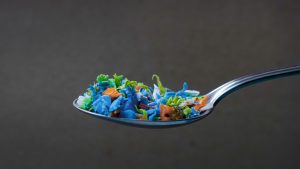Articles / Clinical Conversations: Interpreting Iron Studies… Tips, Traps and Curly Cases | Part one


writer
Nephrologist and General Medicine Specialist; Northern Beaches Hospital, Mona Vale Hospital, Manly Waters Private Hospital, Delmar Private Hospital and Dale Street Medical Specialists.
This is part one of this series. Read Part 2 >>
Practice points
• Iron infusions rapidly replace iron stores over days to weeks.
• To get the haemoglobin from 73g/L up to 99 g/L via blood transfusion requires at least two units of blood at enormous cost. One to three months later the patient would have become anaemic again, they would be still iron deficient, and their quality of life would not have been improved if iron is not replaced.
• Severe microcytosis due to iron deficiency in a reasonably well patient suggests the anaemia has been occurring over a very, very long period of time.
• Patients who have stage 4 kidney failure should have their ferritin level maintained at greater than 100 ug/L and the transferrin saturation greater than 20% at all times, prior to erythrocyte stimulating agents.
• Anything that stimulates haematopoiesis (e.g. polycythaemia, erythrocyte stimulating agents) will make the bone marrow use up vast quantities of iron and this then needs to be replaced.
• Repeated transfusions may cause iron overload and an iron-chelating agent may be indicated.
• A thalassemia trait may present with a hypochromic, microcytic picture, although the iron stores are completely normal.
• The serum iron has a diurnal variation and is it is affected by so many other parameters that we can discard it completely.
• The four most helpful iron studies parameters are the haemoglobin, the serum ferritin, the transferrin saturation and the CRP.

TIAs and Carotid Stenosis

Low libido - What is it & How is it Managed?

Functional Gastrointestinal Disorders in Infants – Practical Advice for HCPs

Using the New RSV Vaccine in Practice

writer
Nephrologist and General Medicine Specialist; Northern Beaches Hospital, Mona Vale Hospital, Manly Waters Private Hospital, Delmar Private Hospital and Dale Street Medical Specialists.




Strongly support
Somewhat support
Neither support nor oppose
Somewhat oppose
Strongly oppose
Listen to expert interviews.
Click to open in a new tab
Browse the latest articles from Healthed.
You have completed the Educational Activities component of this resource.
Select ‘Confirm & claim CPD‘ to confirm you have engaged with this resource in its entirety and claim your CPD.
You will be taken to explore further CPD learning available to you.